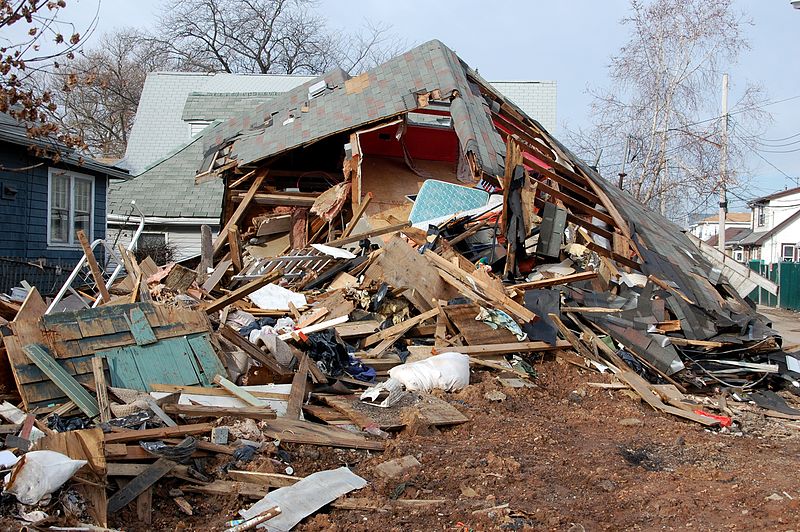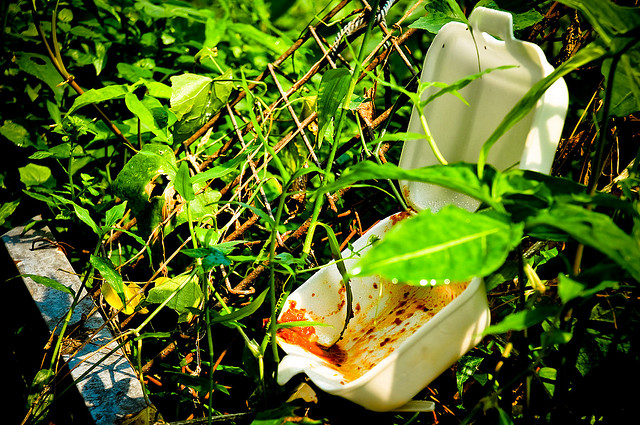Safeguarding Staten Island's East Shore From Future Hurricanes

The city announced last week that it will spend $100 million on flood-prevention infrastructure upgrades for the New Dorp Beach and South Beach areas of Staten Island. Those two neighborhoods — located on Staten Island’s East Shore — were at the epicenter of devastation wrought by Superstorm Sandy over a year ago.
The island’s East Shore is directly exposed to the New York Bight, a coastline formation that can channel powerful storm waves and surges into areas within New York Harbor. But its vulnerability to flooding is directly tied to both a changing environment and lack of planning by the city over several decades. It’s no surprise then that both the East and South shores of the island have now been designated by the city as areas at “major risk” from storm surge.
And the threat of wave action and coastal flooding is likely to grow: Preliminary work maps released by FEMA earlier this year indicate the number of structures on the East and South shores within the 100-year floodplain — the area that has a one-percent or greater chance of flooding in any given year — has expanded by 46 percent. The number of residential units has expanded by 50 percent.
All beaches along the East and South shore coastlines are now within a V-zone, which is a coastal area at risk of storm waves of three feet or more.
While the East Shore is one of the areas in New York City most vulnerable to extreme weather and rising sea levels, it has suffered from flooding for decades. Originally a “vast swath” of marshes and swamps, development “far outpaced the construction of critical infrastructure like storm sewers,” said Carter Strickland, commissioner of the city’s Department of Environmental Protection, in a written statement.
That’s where the new flood prevention infrastructure could make a big difference in the years to come.
The area’s local City Council representative, Republican James Oddo, who is also the borough president-elect, said that many homes were not built to withstand punishing coastal storms.
And despite their proximity to the shore, areas like New Dorp Beach and South Beach developed without a comprehensive plan. “Summer communities became year-round homes. The city allowed the construction to happen with an ‘I.O.U.’…’we’ll come in at some later point’…the city is still playing catch-up,” Oddo said.
The lack of proper stormwater infrastructure has created systemic problems for communities like New Dorp Beach and South Beach. “Any time there is an average rainfall, [it’s a] terrible situation,” Oddo said. “There’s no place for the water to go…[the infrastructure projects] will give these folks a little peace of mind,” he added.
The planned infrastructure work in South Beach, for instance, has been “20 years in the making,” noted Oddo.
Industry's Opposition To Foam Ban Cleared Away

Mayor Michael Bloomberg’s controversial plan to ban foam food containers just got less controversial.
The Dart Container Corp., a leading manufacturer of foam and plastic products, dropped its opposition to the bill yesterday after weeks of negotiations between the business community and the City Council. The news leaves little doubt that the Council will pass the bill that will potentially ban any foam containers used for food and drink.
“Throughout this process we have negotiated with the city in good faith and we thank Speaker Quinn and the members of the city’s Committee on Sanitation and Solid Waste Management for making sensible changes to the proposed bill,” said Michael Westerfield, Dart’s director of recycling programs, in a statement.
In thanking the Council, Westerfield still said that the bill singled out and “unfairly maligns” foam products. Even so, he added that the compromise was in the best interests for everyone involved as their attention turns to “successfully passing the recycling test.”
The American Chemistry Council, which helped organize local restaurant owners opposed to the ban through its Restaurant Action Alliance, was also satisfied with the news of compromise.
“The American Chemistry Council congratulates the Council on its decision to implement polystyrene foam recycling in New York City, and we look forward to working with the de Blasio Administration to further increase plastic recycling,” said Warren Robinson, spokesman with the ACC.
Representatives from the foam industry originally took issue with the original bill’s implementation of a year-long trial to explore recycling.
At a recent hearing, the bill’s lead sponsor Councilman Lew Fidler joined Bloomberg Deputy Mayor Cas Holloway in arguing that plastic foam goods — commonly referred to as Styrofoam — were not actually recyclable.
Nonetheless, the bill will give the Department of Sanitation one year to roll out a recycling plan. Opponents of the ban, including Dart, argued that it wouldn’t make sense for the company to invest millions into potentially short-lived program with no guidelines from the city as to how it would decide whether or not recycling was feasible.
"Previously, there were claims made by opponents of the bill, many of which were false or misleading, and there was a lot of money spent — over one million dollars, in fact — lobbying against this bill," said City Councilman Lew Fidler, the sponsor of the bill, in a statement. "Yet, words and money can only buy you so much. This bill demands proof and this bill provides a solution."
The new version of the bill still has a year-long trial, but offers more details on how the city would proceed after the trial period.
A ban on the bill would only go into effect on January 1, 2015 at the earliest, and that’s only after the new sanitation commissioner consults with recycling experts and the business community — as well as any other experts he or she deems necessary.
The commissioner must then report to the Council and mayor, a key check that helped convince members of the foam industry.
Additional changes to the bill include specific definitions on those groups subject to the ban and offers any restaurant, nonprofit, food truck or store earning less than $500,000 annually to request a hardship waiver. It also requires the city to undertake an educational campaign on how New Yorkers need to adjust to whatever decision made by the commissioner.
Alternatively, if the recycling test is successful, New York City could be the first major metropolitan city with the ability and capacity to recycle foam goods.
Countdown To Approval For Rockaway Pipeline
It’s possible to build and operate the Rockaway pipeline without doing serious harm to the local environment, federal regulators say. But the pipeline’s operator must agree to a series of additional steps, such as disclosing the toxicity of the drilling fluid it will use.
“We are recommending that our mitigation measures be attached as conditions to any authorization issued by the Commission,” said reviewers for the Federal Energy Regulatory Commission. Today is the last day the public will be able to submit comments on a draft Environmental Impact Statement for major sections of the Rockaway pipeline project.
FERC, which released the draft EIS in October, stated that, “approval of the Projects would have some adverse environmental impacts, but these impacts would be reduced to less-than-significant levels.” Any environmental damage to the Rockaway coast and other areas would “mostly occur during [pipeline] construction,” the agency added.
FERC also notes in the EIS that pipeline-related infrastructure, particularly a meter and regulating facility to be built at Floyd Bennett Field in Brooklyn, are vulnerable to flooding and high winds associated with category 1 to 2 hurricanes. But these vulnerabilities could be addressed said the agency.
State and federal agencies, and environmental groups, have raised concerns about the complex project, especially the impact of drilling a 3-mile section of ocean floor pipeline off the Rockaway coast. Some local groups have also charged that the pipeline is part of the “industrialization” of the New York coastline, and an inappropriate use of a national park.
But the pipeline meets a critical demand, according to one of its builders, Oklahoma-based Williams companies. Williams stated in a federal filing that local utility, National Grid, requested the pipeline and that it would “reduce gas supply constraints, allowing existing dual-fuel power plants and customers with interruptible service…to continue using natural gas rather than switching to their alternative oil-burning systems.”
The findings of the draft EIS are a significant step forward for the Rockaway pipeline. If approved by all the relevant agencies, construction on the ocean floor section of the pipeline would begin in the spring of 2014.
And the determination is good news for the Bloomberg administration, which has consistently supported the project, saying that natural gas could enable New York to transition away from heavier heating oils that have contributed to the city’s air pollution woes.




